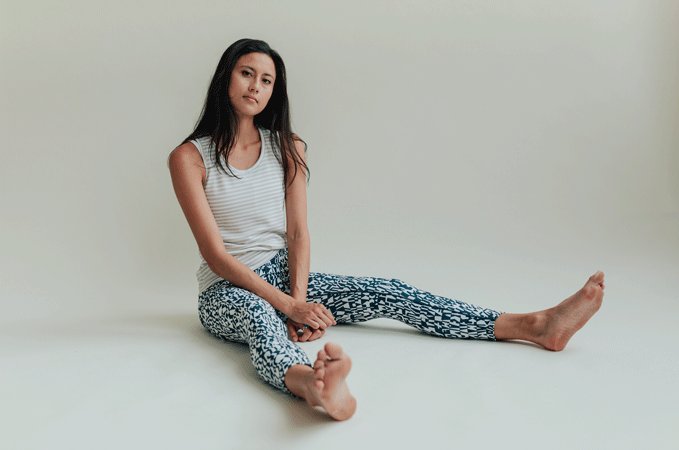We know physical activity is good for health, but much of the focus on the benefits are on the physical. But there’s substantial research on the effects of physical activity on the structure & function of the brain + mental and cognitive health. todaysdietitian.com/newarchives/ND
New season looks in muted tones with throw on jackets and coats in 100% washed linen by Carolyn Donnelly @dunnesstores

Liked by susangill1977 and others
 dunnesstores
dunnesstores- New season looks in muted tones with throw on jackets and coats in 100% washed linen for an easy, relaxed nonchalance.
You’ve got more than just tightness stored in your hips. Release whatever emotional gunk may be gumming up your gears with these block-supported poses. @Yoga_Journal
New season looks in muted tones with throw on jackets and coats in 100% washed linen by Carolyn Donnelly @dunnesstores

Liked by susangill1977 and others
 dunnesstores
dunnesstores- New season looks in muted tones with throw on jackets and coats in 100% washed linen for an easy, relaxed nonchalance.
Your work to weekend wardrobe needs these ✨ @dunnesstores #womensfashion

 dunnesstores
dunnesstores- Your work to weekend wardrobe needs these ✨
Tiered Dress €25
Tunic Dress €25
#dunnesstores #womensfashion1d
Never too tight, always bright. Hello, #Spandos.@oiselle

oiselleVerified account @oiselle 10 hours ago
Never too tight, always bright. Hello, #Spandos: http://bit.ly/2Li25mL
The 6 most effective core exercises for distance athletes @runnersworld #pilates
New season looks in muted tones with throw on jackets and coats in 100% washed linen by Carolyn Donnelly @dunnesstores

Liked by susangill1977 and others
 dunnesstores
dunnesstores- New season looks in muted tones with throw on jackets and coats in 100% washed linen for an easy, relaxed nonchalance.
Latest collection @paulcostelloeofficial @dunnesstores

Liked by martmartin1 and others
- dunnesstores
- Brighter colours for brighter days with Paul Costelloe’s latest collection. Discover soft-structured jackets in brazen shades with sleeves to be slightly pushed up no further than the elbow.
@paulcostelloeofficial
#PaulCostelloe #StudioSS241w
How to fit in your work out at home – Katie Lawton MEd @ClevelandClinic #consistency

Whether you’re a fitness fanatic or casual gym goer, the thought of picking up a dumbbell covered in germs is enough to make anyone cringe. And with the spread of coronavirus (COVID-19) becoming more prominent every day, gyms and fitness centers across the country are closing their doors to help protect members.
If staying active is an important part of your life (as it should be!) you might be wondering how you’re supposed to go about this whole at-home workout thing. Thankfully, it’s easier than you think.
“A lot of what you’ll find with at-home workouts is about maintaining your current level of fitness,” explains exercise physiologist Katie Lawton. “And with workouts, consistency is key.”
Here Lawton shares some practical advice about how to stay active at home.
- Find workouts through online videos and apps. The internet is choked full of free workout videos. From yoga, to Zumba, to circuit training that you can do in your backyard. Test out a few workouts to find a series, program or instructor that you like. (Bonus points if you can get other members of your household to join you!)
- Walk, run or bike outside. Everyone could use a little fresh air. Hit the pavement in your neighborhood and challenge yourself to walk, run or bike a certain number of minutes or miles. If you’re an experienced fitness buff and you’re really looking to ramp up your heart rate, opt for hills or try a running based HIIT workout.
- Focus on body weight movements. Now’s the time to incorporate body weight exercises into your workouts. These tried and true movements include things like pushups, squats, lunges, planks and burpees. They’re convenient, efficient and inexpensive (AKA free). Pick a few different movements and create a circuit workout by completing as many reps of that one movement as possible in one minute. Then rest for a minute and continue on to the next movement and do the same thing. Repeat this for 15 to 20 minutes.
- Order inexpensive fitness equipment online. Things like jump ropes, pull up bars that attach to door frames, suspension trainers and resistance bands are inexpensive items that can pack a punch when it comes to your workouts. Lawton recommends choosing a heavier resistance band and suggests tying the suspension trainer to a tree outside. You could also ask around if other family members or neighbors have old dumbbells or barbells that they no longer use.
- Utilize items around your house. Lawton encourages creativity when it comes to working out at home. Run up and down your basement stairs, use a chair for triceps dips or grab cans of soup or a gallon of water as a weight. Even jumping over a shoebox a few times can be a quick burst of cardio.
- Get your household involved. If you have kids, chances are they have more energy to burn off than you know what to do with and they’d be thrilled to be involved. Try to incorporate them into your plans to stay active – whether it’s encouraging them to do pushups with you or organizing a backyard obstacle course. Try to walk your dog every day, play tag with your kids or get your whole family involved in a backyard soccer game. Also never underestimate the power of a good dance party! It’s a great way to make memories with your family and burn off some stress and anxiety.






